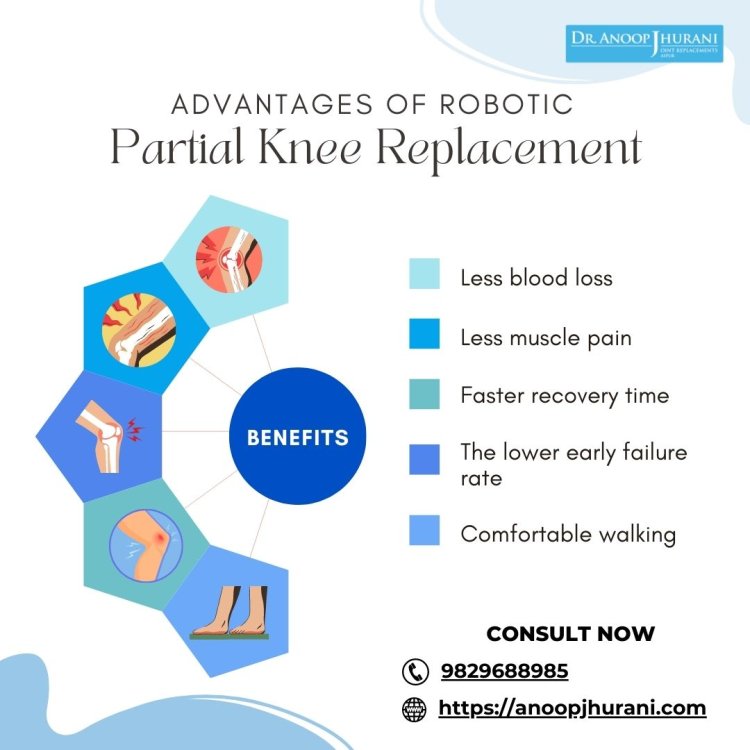Advantages of Robotic Partial Knee Replacement
Get better alignment and balance with total knee replacement surgery in Jaipur, by the most experienced surgeon.
Share this Post to earn Money ( Upto ₹100 per 1000 Views )

Robotic-assisted partial knee replacement surgery offers several advantages compared to traditional manual techniques. Here are some of the key benefits of using robotic technology for partial knee replacement:
1. Optimal Alignment: Achieving proper alignment of the implant is essential for long-term success and improved joint function. Robotic systems help the surgeon make accurate bone cuts and precisely position the implant components, resulting in optimal alignment and biomechanics.
2. Preservation of Healthy Tissue: Partial knee replacement is performed when only one part of the knee joint is affected by arthritis. Robotic systems enable the surgeon to precisely target and replace the damaged portion while preserving healthy bone, cartilage, and ligaments. This can lead to quicker recovery and a more natural feeling joint.
3. Smaller Incisions: Robotic-assisted surgery often involves smaller incisions compared to traditional open surgery. This leads to less disruption of surrounding tissues, reduced postoperative pain, and faster recovery times.
4. Less Blood Loss: Robotic systems use minimally invasive techniques, which can result in reduced blood loss during surgery. This is beneficial for patients, particularly those who may have preexisting medical conditions affecting their blood count.
5. Faster Recovery: The combination of precise implant placement, smaller incisions, and reduced tissue disruption can lead to faster recovery times for patients undergoing robotic-assisted partial knee replacement.
6. Less Painful: Smaller incisions and less trauma to tissues often translate to reduced postoperative pain. This can contribute to a more comfortable recovery experience for patients.
7. Improved Implant Longevity: Accurate alignment and positioning of the implant components can lead to improved implant longevity, potentially reducing the need for revision surgery.
8. Minimized Complications: Robotic technology's precision and guidance can reduce the risk of complications such as implant misalignment, instability, and premature wear.
9. Aging Population: As the population ages, there is an increasing demand for joint replacement surgeries. Robotic-assisted partial knee replacement provides an advanced option for maintaining joint function in older adults while minimizing surgical risks.
It's important to note that while there are numerous advantages to robotic-assisted partial knee replacement, the decision to use this technology should be made in consultation with an orthopedic surgeon. The surgeon's expertise and familiarity with the robotic system, as well as the patient's individual needs and condition, will play a significant role in determining the most suitable treatment approach.








